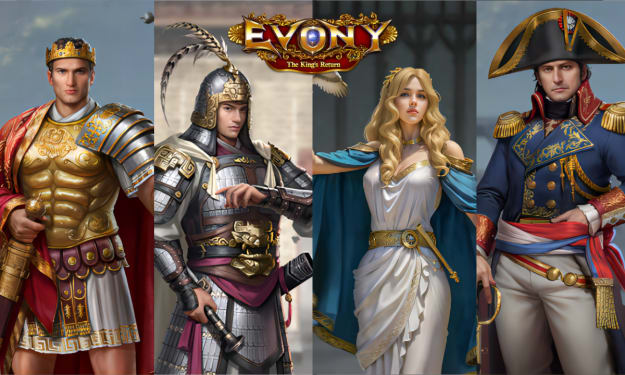Video Game Violence: Morality Legit
Writing

Chapter One: Introduction
Media violence takes a strong effect on young adults in today’s world. Savage movies such as Hunger Games: Catching Fire and Divergent affect teenagers’ expectations for reality. Besides, young adults and adolescent children immerse themselves into vehemeate electronic games. Video games create immersive alternative reality. Teen players designate themselves to interface real people through the fake storytelling of games. Some people agree that children's insanity is caused by violent video games; thereof, they blame developers for creating these games that affect their “mental and emotional well-being especially during their formative years,” acclaimed by Sen. John “Jay” Rockefeller” (qtd. in Lyons 161). In spite of that, other people may assure the violent content of video games does not hold authority for teens’ viciousness and mania of going insane. Joan E. Bertin declares, “Violence has always been a fact of life and remains a reality for many people” (qtd. in Lyons 161). Although some experts believe that video games have a negative influence in leading to violent behavior among teens, such games actually benefit teenagers because they react well to clear-cut resolutions, relieve their tensions, and develop critical thinking skills.
Chapter Two: Defense
The first reason video games benefit teens is because teenagers’ ambition as players is to resolve definite storylines. They pay attention to specific goals to reach in the game’s plot as players. One expert from the University of New Mexico, Victor Strasburger, asserts, “Action doesn’t have to involve shooting, blood spurting or bones breaking” (qtd. in Lyons 151). In Watch Dogs 2, Marcus Holloway, a DedSec hacker, strikes against enemies by sabotaging them through the cameras using his laptop. He detects a self-explosion detector to kill the group of enemies at once. Therefore, the Hacker War mission is to bunker-bust the bomb by hacking the router, which provides taxing puzzle pieces to put together before the time runs out. Gamers must be Marcus to solve the segments’ story in time in order to beat the game. Teenage gamers aim to be a master at a comprehensive state to triumph over the game’s chain of events.
Second, teenage gamers tame their stress level by facing their nerves and trepidation. When teen players face an opponent, they call upon their allies for help. Other experts speculate,“violent video games challenge the brain, allow participants to face their fears, act out aggression in a fantasy world and -in the case of multiplayer games- encourage social behavior”( Lyons 151). In Dark Souls 3, the single player finds the Old Demon King located in Smouldering Lake; however, the player is killed with its mace. The player calls on an ally to help slay the boss. When both players terminate the King, their anxiety level decreases once they reach victory. After the first loss, teen players immediately overpower a foe to release their apprehension and gain confidence in themselves.
Third, teen gamers also progress practically in their logic. Teens take advantage of bloodshed conflict games like Call of Duty, Grand Theft Auto V, and Assassin's Creed. “Many games portray warfare as heroic and a confirmation of various cultural models, which provides pleasure and allows players to experience the world from different perspectives,” asserts James Paul Gee, an Arizona State University professor of literacy studies (qtd. in Lyons 151). In the real world, teens learn the art of stealth, karate, and boxing to defend themselves and to protect others from danger. In the gaming world, they use their tactic to collaborate with other players in order to become victorious. Their sense of awareness raises dependence on and trust in the gameplay for their own safeguard in the physical existence of life.
Chapter Three: Concession
First, the opponent claims video games are sort of bad because immature teens obsessively crave vicious video games to commit crimes. Some may argue that the the creators of Rockstar Games bear responsibility for teens engaging in random acts of cruelty in physical existence such as shooting innocent lives. In Grand Theft Auto V, players “drive through stop lights, mow over civilians, crash and die and start over, get in ridiculous gunfights and still walk on two feet” (Kain 5). For example, Steve Doocey professes that high school shooters Eric Harris, Dylan Klebold, Jared Lee Loughner, James Holmes, and Adam Lanza virtually are linked to breaking a violation of the law. Bushman, an Ohio State University communication and psychology professor, observes “participants who played a violent video game 20 minutes per day for three days displayed increased aggressive behavior”(qtd. in Lyons 150). Thus, problems with teenagers appear to take a gameplay and follow a scheme based on murders. Inexperienced teens get carried away to commit illegal activities by playing intense video games.
Second, teens generate their own mental illness to undergo their problems in real life. The New Yorker Simon Parkin contends that young teens are foolish who emerge themselves with fierce games to behave chaotically (Kain 4). Teens with pre-existing inappropriate mind states demonstrated “increased aggression among teenagers who played M (Mature) rated video games,” Cantor insists (qtd. in Lyons 151). Grand Theft Auto V views to be “a torture stimulator” and a bare naked nightclub (Kain 4), which Bushman claims, “increase aggressive thoughts and behavior while decreasing empathy among males and females of all ages” (qtd. in Lyons 150). This exemplifies a correspondence in youngsters’ minds which illustrates their psychological issues like to have a manic episode or epilepsy. In the outcome, teens should manage their own importance while facing the truth.
Chapter Four: Refutation
First, video games are still good because the correlation with aggression and violent video games remains unidentified. However, experts have found that animated graphics are correlated with belligerent behavior, yet unprovided evidence finds that teens capture the attention of real weaponry to kill victims.“Results showed video games did not influence aggressive behavior or perceptions of empathy, but cooperative play with less aggression” (Lyons 150). This explains that stress reduces vivid views of sensitivity like having an emotional breakdown. Teen players have no relationship with anger management.
Second, video games give children freedom to play with their imaginations. Nevertheless, critics recommend that parents should track the ranks of video games. The production of video games has no control over young players, but critics “need to do more to better inform parents and limit children’s access to the most violent media content” (Lyons 151). The First Amendment clearly “protects interactive entertainment software, and the government generally cannot restrict their sale” (152). Children acknowledge their own liability between make-believe and the real world. The perplexity in leisure leaves parents to want to restrict violent content in games.
Third, they also give teenagers a chance to improve their relaxation. Even though parents expect teens to not set their minds to video games, that doesn’t stop children wanting to play with them, which meditates them in a fine way. Unfair conclusions come across as “mass murders: untreated mental illness” to the child’s mind as expected by adults (Kain 6). In the future circumstances, teens could start to relax when they loosen up their thinking and focus on the game. When they are older, which leads them to mature faster, “exposure can prepare children for real-world events and help them address their fears” (Lyons 151). Therefore, teens being in a relaxed state can help boost their confidence into becoming a wiser person as grownups.
Chapter Five: Conclusion
Regardless of experts’ opinions about the link with violent fantasies put into video games, the teenage gamers will always be motivated to play for fun in their spare time. Games will help children with their anger, which manages them to keep them calm. This reasoning gives protection to continue as children being gamers. Notwithstanding, people who are against the reason will try to defend the position in making an excuse. The arguments on both the opponent’s and proponent’s side have insightful and logical points. The government law secures that the game industries have rights to consider controlling their sales and ratings, but parents should protect their children from easily accessing violent video games. Thus, professionals don't know that teen responses are accurate every time when the teens show their appropriate behavior in affecting their lives. Video games are known as a reinforcer when children behave appropriately. By the time they are young adults, they may face battle among cruel people like gangsters. Young adults will be able to defend themselves. Most likely, future young adults will have an appropriate mentality in recognizing the difference between fantasy and real life dangers that occur.
Works Cited
Kain Eain “Do Games Like ‘Grand Theft Auto V’ Cause Real-World Violence?” Forbes,
18 Sep 2013, 14 Nov 2020 https://www.forbes.com/sites/erikkain/2013/09/18/do-games-like-grand-theft-auto-v-cause-real-world-violence/#5d90fce43241.
Lyons L. Christina “Media Violence” CQ Researcher, Vol. 24, 145-168,
14 Feb 2014, 14 November 2020
http://library.cqpress.com/cqresearcher/document.php?id=cqresrre2014021400&type=hitlist&num=0.
About the Creator
@chainlostsoul
Everything about me and stay in the know!! beacons.ai/chainlostsoul.






Comments
There are no comments for this story
Be the first to respond and start the conversation.